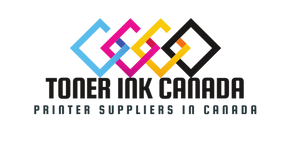For numerous reasons, refillable ink systems have recently increased in popularity in the printing sector. Besides transforming the approach businesses and individuals have towards their office print requirements, reusable ink refills are more affordable and eco-friendly than conventional cartridges. But is this the destined future of printing? And how does it shape trends in Canada?
This blog describes refillable ink the future? Pros, cons & Canadian trends. Ultimately, you will better understand whether refillable ink is right for you and its potential to change the industry.
Buy Brother Compatible Ink Cartridges in reasonable prices at Toner Ink Canada.
What Are Refillable Ink Systems?
Refillable ink systems operate by substituting the single-use ink cartridge with a refillable reservoir or ink tank. Unlike former refillable cartridges, which are thrown once used up, refillable systems only allow you to refill the ink. This form of sustaining printers allows the components to be nonfunctional for longer, guaranteeing environmental and financial benefits.
Refillable ink printers typically use bottles or syringes to refill the ink tanks. Due to their ease of use and cost-effectiveness, these systems have become popular, especially among heavy printing users such as small businesses, educational institutions, and graphic designers.
The Pros of Refillable Ink Systems
Significant Cost Savings
One of the most captivating advantages of refillable ink systems is their cost savings. Designed for consumer convenience, refillable ink systems are usually more cost-effective than traditional systems as they allow consumers to purchase ink bottles instead of expensive cartridges that refillable ink systems tend to overprice. This can mean hundreds of dollars in savings each year for regular consumers, especially for CAD businesses with intensive printing requirements.
This affordability does not compromise quality. Although cheaper, refillable inks are sold in different grades to meet industry specifications, ensuring the same sharp text printouts and colour accuracy expected from cartridge-based systems.
Sustaining the environment
Another positive facet is the environmental effects of refillable ink systems. Traditional cartridges are very wasteful, as they often get disposed of in landfills. They also consume a lot of plastic and energy during creation, further adding to their carbon footprint.
On the other hand, refillable ink tanks greatly minimize this waste. Consumers limit their environmental impact by reusing the same tank or reservoir, reducing plastic pollution. For eco-friendly Canadians, this is a huge marketing advantage for switching to refillable systems.
The Cons of Refillable Ink Systems
Initial Investment Costs
Although refillable ink systems can save money in the long run, printers usually have a higher upfront cost. Epson EcoTank, Canon MegaTank, and HP Smart Tank offer refillable models at a premium price compared to cartridge printers. This can be a drawback for some consumers, especially those with limited financial resources.
Additionally, high-quality refillable inks can be expensive. While it may be financially advantageous, the initial cost may appear steep to those used to low-yield cartridges that gradually inflate costs over time.
Risk of Maintenance and Mess
Manually refilling ink tanks can be messy, and overfilling or spilling ink is possible. The process can stain workspaces and clothing and damage the printer if done improperly. For novice users, the extra maintenance tasks, such as cleaning the tank or monitoring for clogs, may cancel out most of the convenience offered by the system.
Beyond the issue of messes, maintaining adequate printout quality requires the use of compatible inks. Failure to do so with substandard refillable ink almost always guarantees clogged nozzles, streaky prints, or compromised colour fidelity. This shifts the burden of responsibility onto the users to make the right product choices.
Trends in Refillable Ink Systems in Canada
Growing Popularity Among Eco-Conscious Consumers
The refillable ink system has received wider acceptance in Canada, particularly as sustainability becomes a pressing issue for people and organizations. With a goal of net-zero greenhouse gas emissions by 2050, more Canadians at the household and trim business levels are looking at eco-friendly technologies such as refillable printers.
Shops are responding by providing a greater selection of refillable printers. Major brands such as Epson, Canon, and Brother are now proactively promoting the environmental advantages of their refillable models, which appeals to Canadians who want to make value-based purchasing decisions.
Integration with Small Business Needs
The practicality of refillable ink systems to small businesses is one of the trends behind the adoption of refillable ink in Canada. Refillable systems provide excellent value to businesses with regular printing needs, from a real estate office printing promotional brochures to a café locally producing its in-house menus. Small businesses increasingly turn to models like the Epson EcoTank due to its reliability and cost-effective scalability.
Canadian remote workers or home-office setups have also helped boost the trend. The pandemic made working from home the norm for many people, and high-yield refillable printers became smart buys for managing everyday printing tasks without the continuous costs of cartridges.
Are Refillable Ink Systems Perfect for Everyone?
Determining Suitability Based on Printing Habits
Whether or not a refillable ink system is right depends mainly on your specific printing needs and volume requirements. Schools, graphic designers, and marketing agencies are examples of individuals or organizations that print frequently and would benefit from the cost and efficiency of refillable systems. However, less frequent home users may find that the initial cost associated with refillable systems and maintenance requirements presents a larger drawback than the advantages.
Moreover, creativity or other realms of visual capture might dictate the use of high-quality ink, which comes at a price. Due to their competitive pricing, refillable systems can further deepen the value offered. However, the ultra-high printing quality requirements of professional-grade printers will need proprietary inks, reducing refillable systems' overarching value proposition.
Balance Between the Cost and Shared Convenience
Ultimately, refillable systems may be impossible to overlook considering the vast range of benefits they offer. Convenience is, however, a more complex issue. Maintenance activities are more tedious and time-consuming, especially with nozzles.
Avoiding spillovers during refills and ensuring clean nozzles is primarily due to the advanced skill set offered by traditional cartridges. Customers must evaluate whether these minimal but inconvenient solutions provide economical and ecological advantages.
Innovations and the Future of Refillable Ink Systems
Expanding Ink and Printer Technologies
As technology improves, user experience on refillable systems also improves continuously. Companies are developing smarter solutions for refills, like spill-free bottles or automated refilling systems that do not require manual work. In addition, older printers are equipped with AI features that monitor and predict ink levels to provide warnings in advance, notifying users when the tank needs to be refilled.
In addition to expanding technology, other manufacturers are researching and developing bio-based, non-toxic inks to create even more sustainable refillable systems. Such innovations appeal to clients and force competing companies in the market to focus more on eco-friendly solutions.
Going International
Refillable systems that use ink have outpaced traditional cartridge-based systems worldwide. Countries like Japan and Germany are the first to adopt these systems due to their environmental policies and technically competent population.
The emergence of these trends internationally strains the Canadian market, forcing the manufacturers and retailers to adapt and meet the customer standards for advanced and renewable, eco-friendly printing solutions.
Conclusion
Refillable ink systems are set to advance printing capabilities worldwide and in Canada. The restraint of costs, environmental protection, and versatility of these systems make refilling a parton printer compelling for frequent print users. Unlike any other innovation, it has as few as append maintenance and increased primary expenditure.
For Canadian companies and individuals trying to balance cutting-edge technology and sustainability, the high-tech design of a refillable ink system presents fantastic opportunities. The evolution of these systems strengthens their case against traditional cartridges. Refillable ink is an innovative approach to printing, whether you are an environmentally friendly print lover or a careful small business owner.


Leave a comment